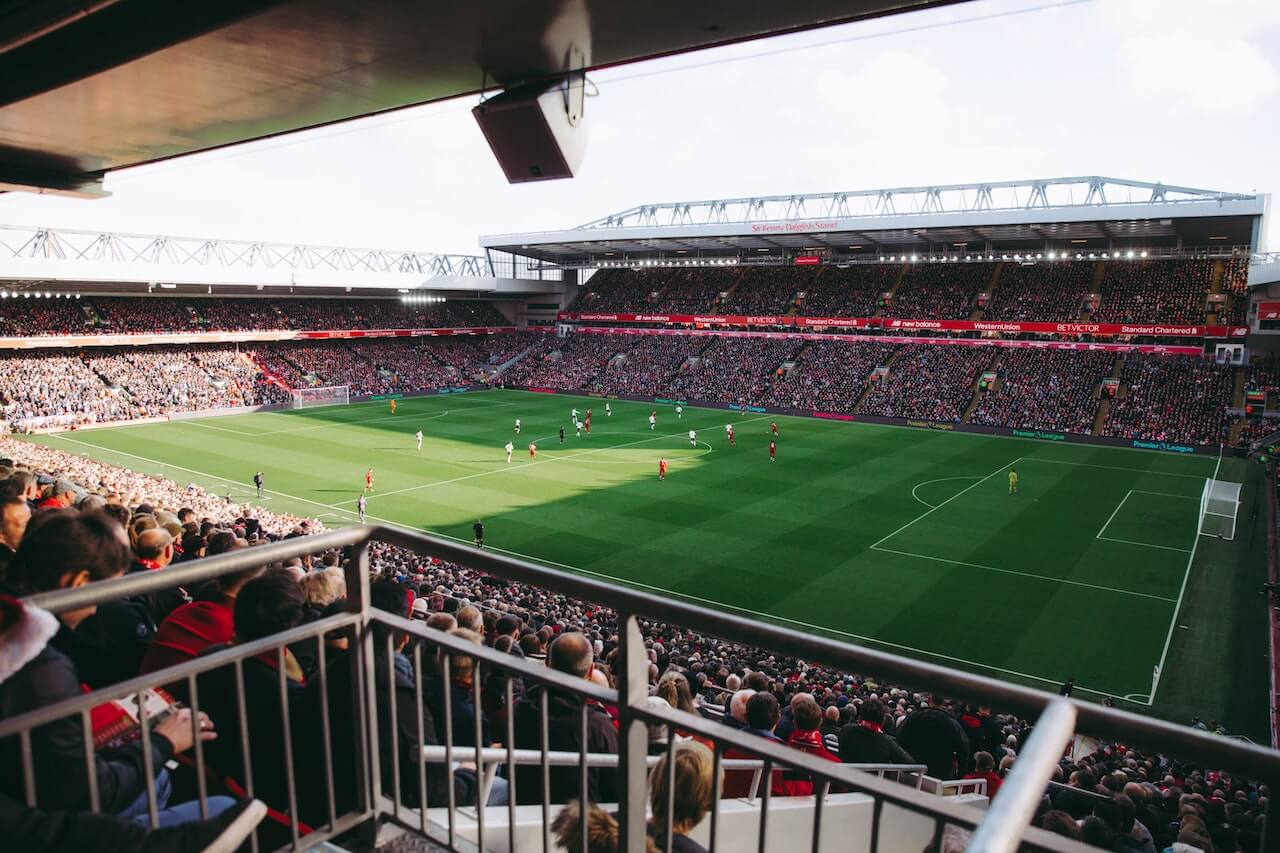The 5-3-2 formation is a popular soccer strategy that has been used by many teams around the world. This formation consists of five defenders, three midfielders, and two forwards. The defenders are split into three center backs and two wing backs, while the midfielders are usually one central midfielder and two attacking midfielders. The two forwards are usually a striker and a second forward who can drop back into midfield.
The 5-3-2 formation is a defensive strategy that is designed to prevent the opposing team from scoring. With five defenders, the team can effectively cover the entire field and shut down any attacking threats. The three midfielders provide support to both the defense and the offense, while the two forwards are responsible for creating scoring opportunities. This formation requires a high level of discipline and teamwork, as each player must work together to maintain the defensive shape and transition quickly to the attack.
Overview of the 5-3-2 Formation
The 5-3-2 formation, also known as the “defensive formation,” is a popular strategy in soccer. This formation consists of five defenders, three midfielders, and two forwards. The five defenders are positioned in a line across the back, with three central defenders and two wingbacks. The three midfielders are positioned in front of the defenders, and the two forwards are positioned up front. The primary objective of the 5-3-2 formation is to defend against the opposition’s attacks. The five defenders provide a solid defensive line, making it difficult for the opposition to penetrate the backline. The three midfielders provide support to both the defense and the attack, helping to win possession and distribute the ball to the forwards. One of the advantages of the 5-3-2 formation is that it allows for quick counter-attacks. With two forwards positioned up front, the team can quickly transition from defense to attack, catching the opposition off-guard. Additionally, the three midfielders provide a strong presence in the midfield, making it difficult for the opposition to control the game. However, one of the drawbacks of the 5-3-2 formation is that it can be difficult to create scoring opportunities. With only two forwards, the team may struggle to break down the opposition’s defense and create chances. Additionally, the midfielders may have to cover more ground, as they are responsible for both defense and attack. Overall, the 5-3-2 formation is a solid defensive strategy that can be effective against strong attacking teams. However, it may not be the best option for teams looking to dominate possession and create scoring opportunities.
Advantages of the 5-3-2 Formation
The 5-3-2 formation is a popular strategy used in soccer. It is a defensive formation that can provide several advantages to the team. Here are some of the advantages of the 5-3-2 formation:
- Strong Defense: The 5-3-2 formation provides a strong defensive structure for the team. With five defenders, it is difficult for the opposition to penetrate and create goal-scoring opportunities. The three midfielders can also help in defending and closing down the opposition’s attacks.
- Counter-Attacking: The 5-3-2 formation is ideal for counter-attacking. With five defenders, the team can quickly win the ball back and launch a counter-attack. The three midfielders and two forwards can quickly transition from defense to attack and catch the opposition off-guard.
- Flexibility: The 5-3-2 formation is flexible and can be adapted to different situations. The team can switch to a more attacking formation by pushing the wing-backs forward or a more defensive formation by dropping one of the forwards back.
- Less Pressure on Midfielders: With only three midfielders, there is less pressure on them to cover a large area of the pitch. This allows them to focus on their defensive and attacking duties without getting tired quickly.
- Less Space for Opposition: The 5-3-2 formation reduces the amount of space available for the opposition to play in. This makes it difficult for them to create goal-scoring opportunities and puts more pressure on them to make mistakes.
Disadvantages of the 5-3-2 Formation
The 5-3-2 formation is a defensive formation that can be effective in certain situations, but it also has some disadvantages that coaches and players need to be aware of.
One of the main disadvantages of the 5-3-2 formation is that it can be difficult to create scoring opportunities. With only two forwards, there are fewer players to attack the opponent’s goal, which can make it harder to create chances to score. This can be especially challenging against teams that play with a lot of defenders.
Another disadvantage of the 5-3-2 formation is that it can leave the midfield vulnerable. With only three midfielders, there may not be enough players to control the midfield and win the ball back from the opponent. This can make it difficult to maintain possession and create attacking opportunities.
Additionally, the 5-3-2 formation can be physically demanding for the players. The two forwards may need to cover a lot of ground and work hard to create chances, while the defenders may need to be constantly alert and ready to defend against counter-attacks.
Finally, the 5-3-2 formation can be difficult to adjust if the team falls behind. With only two forwards, it can be challenging to switch to a more attacking formation and create more scoring opportunities. This can make it hard to come back from a deficit.
Overall, the 5-3-2 formation can be effective in certain situations, but coaches and players need to be aware of its limitations and be prepared to adjust their tactics as needed.
How to Implement the 5-3-2 Formation
The 5-3-2 formation is a defensive formation that is used to counterattack quickly. It is a formation that requires a lot of discipline and organization from the team. Here are some tips on how to implement the 5-3-2 formation:
1. Assign Roles and Responsibilities: In the 5-3-2 formation, the two central defenders are responsible for defending the goal, while the wing-backs are responsible for providing width and cover. The three central midfielders are responsible for controlling the midfield and providing support to the defenders and forwards. The two forwards are responsible for scoring goals and creating scoring opportunities.
2. Practice Defensive Drills: The 5-3-2 formation is a defensive formation, so it is important to practice defensive drills. The team should practice defending in a compact shape and closing down space quickly. The wing-backs should practice tracking back and defending, while the central defenders should practice positioning and tackling.
3. Counterattack Quickly: The 5-3-2 formation is designed to counterattack quickly, so the team should practice quick transitions from defense to attack. The forwards should be ready to make runs behind the defense, while the midfielders should be ready to make forward passes.
4. Communicate Effectively: Communication is key in the 5-3-2 formation. The team should communicate effectively to maintain a compact shape and to coordinate defensive and offensive movements. The central defenders should communicate with the midfielders and wing-backs to ensure that the team stays organized.
Implementing the 5-3-2 formation requires a lot of practice and discipline from the team. The team should be well-organized and communicate effectively to make the most of this formation.
Key Players in the 5-3-2 Formation
The 5-3-2 formation in soccer is a defensive formation that requires a specific set of skills from its players. Here are the key players that are essential for a team to successfully execute this formation:
Center-Backs
The three center-backs are the backbone of the 5-3-2 formation. They are responsible for protecting the goal and preventing the opposing team from scoring. They need to be physically strong, have excellent positioning, and be able to read the game well. They should also be comfortable playing the ball out from the back and initiating attacks.
Wing-Backs
The two wing-backs are responsible for providing width to the team’s attack and defense. They need to be fast, agile, and have excellent stamina to cover the entire length of the pitch. They should also have good crossing and dribbling skills to create chances for the team’s forwards.
Central Midfielders
The three central midfielders are responsible for controlling the midfield and distributing the ball to the team’s attackers. They need to be technically skilled, have good vision, and be able to read the game well. They should also be comfortable playing short passes and switching the play to create space for the team’s wing-backs to attack.
Forwards
The two forwards in the 5-3-2 formation are responsible for scoring goals and creating chances for their teammates. They need to be fast, agile, and have excellent finishing skills. They should also be comfortable dropping deep to link up with the team’s midfielders and hold up the ball to bring their teammates into play.
Overall, the 5-3-2 formation requires a team effort and each player needs to understand their specific role and responsibilities. With the right players and a well-executed game plan, this formation can be a powerful defensive strategy for any team.
Conclusion
The 5-3-2 formation is a popular tactic in soccer that has been used by many successful teams. Its defensive focus can be effective against strong attacking opponents, and its flexibility allows for quick transitions to counterattacks. However, it requires disciplined defenders and midfielders who can cover a large area of the field.
While the formation may not be suitable for every team, it can be a valuable addition to a coach’s tactical arsenal. By understanding the strengths and weaknesses of the 5-3-2 formation, coaches can make informed decisions about when to use it and how to adjust it to suit their team’s needs.
Overall, the 5-3-2 formation is a versatile and effective tactic that can be used to great effect by teams at all levels of play. With careful planning and execution, it can help teams achieve success on the field and outmaneuver their opponents.







